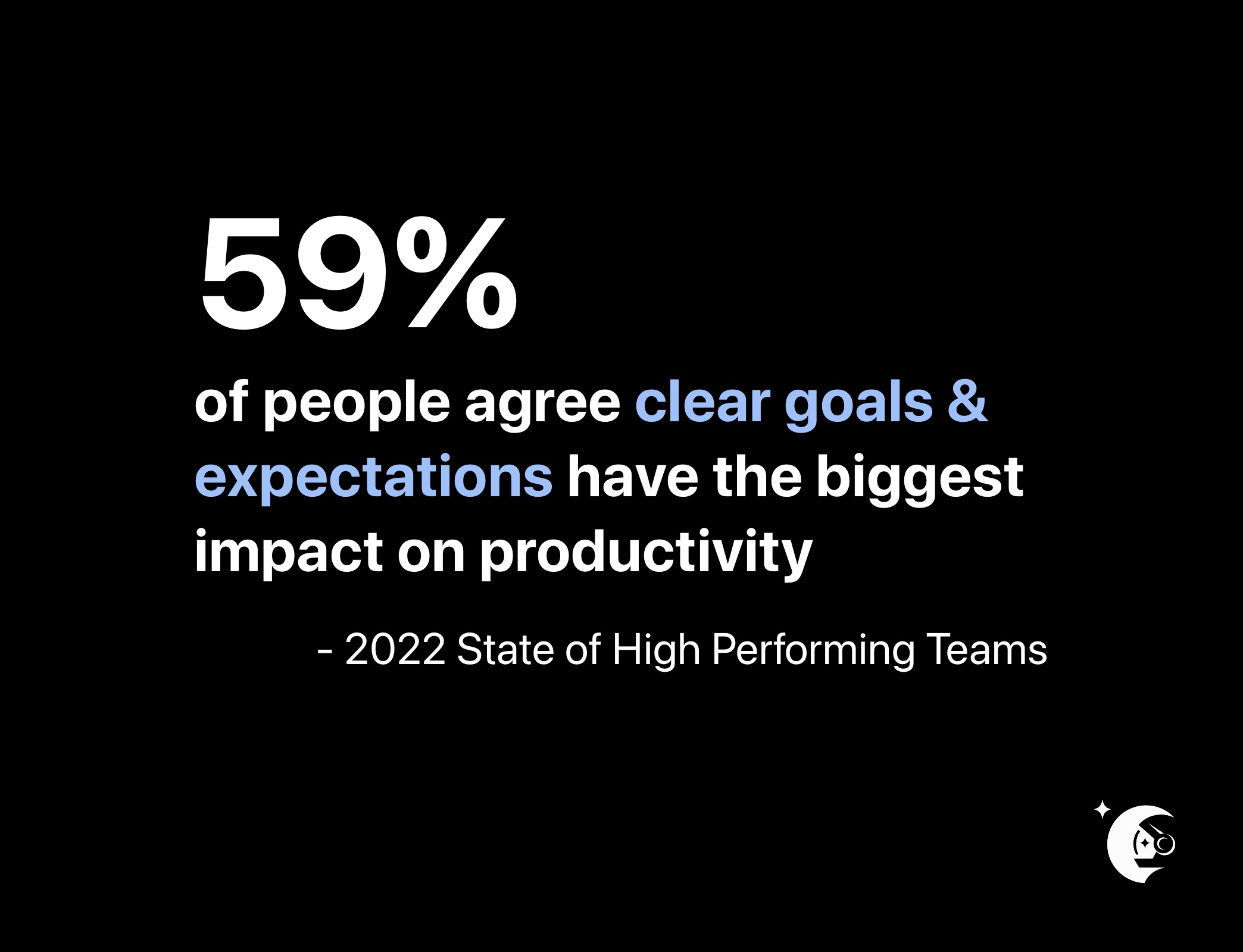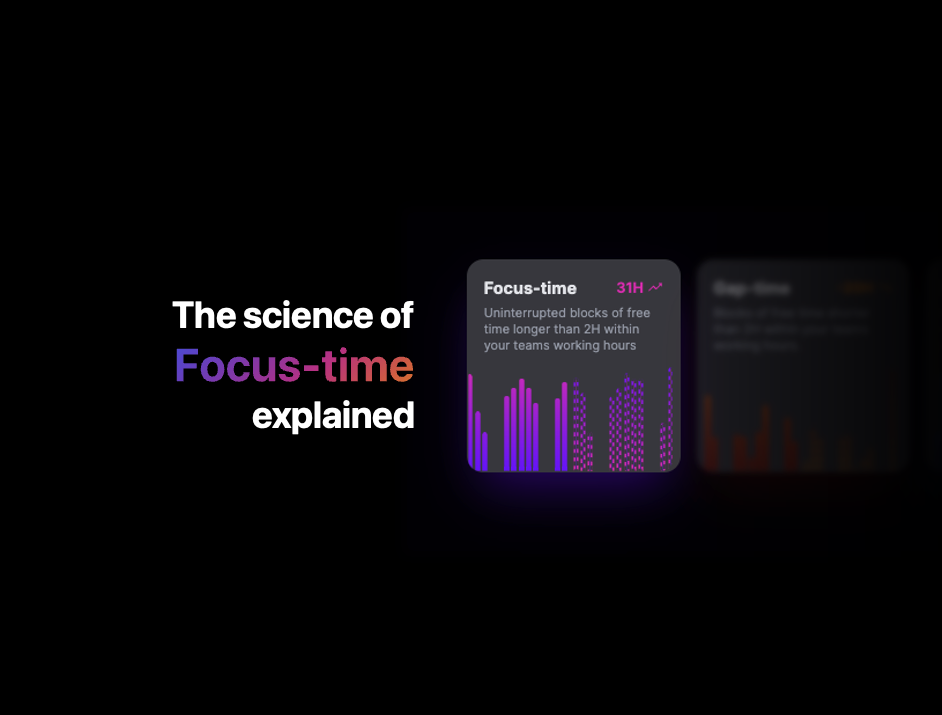Reviewing goals weekly: 7 reasons why you should start now
6 min readEveryone talks about how crucial setting goals is, but what about revisiting them? This article discusses the 7 reasons you should be reviewing goals weekly.

Reviewing goals weekly keeps my team aligned on our top priorities while breaking down lofty quarterly or annual goals into bite-sized tasks.
Leaning on the agile approach, every new week can feel like an opportunity to accomplish something new. The feelings of excitement, accountability and alignment are all the more reasons to start setting goals and reviewing progress every single week.
Reviewing goals weekly keeps my team aligned, motivated, and curious. It gives us 52 chances to correct the ship, rather than 4 if we were to only review them at the start and end of each quarter. It’s done wonders for us.
In fact, every Monday, we sit down to discuss all of our achievements, why numbers have moved up (or down), and the latest challenges and blockers that have come up. It’s also given us ample opportunities to celebrate our efforts and prepare ourselves for another productive week.
In this article, we’ll be walking through 7 reasons why reviewing your goals weekly is a game-changer for any high performing team, including:
- Maintaining agility
- Tracking progress
- Encouraging recognition and collaboration
- Creating ownership
- Fostering cross-functional collaboration
- Improving time management
- Increasing the chances of hitting your goals
1. Maintaining agility
Reviewing goals weekly helps create a more agile work environment by allowing you to double down on what’s working, and open up the door for testing new things. After all, high-growth teams are constantly learning and iterating.
Just because you set OKRs or goals doesn’t mean you’ll know from the outset how to achieve them. It may require some trial and error. Weekly check-ins allow that much-needed upper hand in keeping a constant health check on your projects and performance metrics.
Consistent re-examination helps cultivate agility in your decision-making. Software development teams using the Agile method are already familiar with this approach — they phase out their work into weekly or biweekly time chunks (sprints). And within each sprint, they meet often to track progress and allow for consistent iteration.
2. Tracking progress
Reviewing goals and success indicators weekly is a great way to track progress towards goals. Each week, you’ll have a concrete list of the things the team worked on, which will make correlating success to activities that much easier.
It’ll allow you to stay on top of bottlenecks, what’s working, what’s not — all of which will help you and the team keep an eye on how you’re tracking against your goals. So when it comes time for your leadership team meeting or board meeting, you’ll know exactly where you stand.
Here are some questions you can ask on a weekly basis to better understand progress:
- On a scale from 1-10, how confident are you feeling about our progress on goals?
- Are there any blocker in your way this week?
- Is there anywhere you need support?
- What’s on thing you did last week that had the biggest impact on goals?
3. Encouraging recognition and collaboration
One of the best parts about reviewing goals weekly is that every member on the team is able to see how the work they’re doing is impacting team and company metrics. It’s also a great way to encourage peer recognition on the team.
When learnings and recognition are shared across the team, it’s easier to foster a collaborative team culture and solidify a sense of belonging for team members.
Here’s how keeping goals top-of-mind contributes to effective teamwork:
- Everyone stays motivated by watching their peers work hard to achieve collective goals
- Employees try to reach milestones by actively supporting peers on the team rather than tackling things in a silo
- The team builds up the knowledge and process they need to be more agile and fluid
4. Creating ownership
According to this Salesforce study, employees who feel heard are 4.6X more likely to feel empowered to perform their best. Meaning, when employees have a clear sense of direction and their concerns are duly addressed, it motivates them.
Weekly goal review provides an opportunity for employees to speak up more frequently, self-assess their performance, and get relevant feedback more often. In the presence of this consistent feedback loop, employees can clearly understand how to take their work to the next level and feel empowered to do so.
In contrast, if employees are only talking about goals every 3 months, latent issues can keep piling up with no outlet. It negatively impacts transparency and work ownership. Whereas, a weekly progress check-in leaves less room for discrepancies to take undesired shapes.
5. Fostering cross-functional collaboration
Having a better pulse on how your team is tracking against goals isn’t only helpful for your own team, it’s helpful for the other teams you work with as well.
When everyone understands what each function is working towards and how they all play into the big picture, it helps build a more cohesive company culture. Sharing weekly goals cross-functionally can further strengthen the sense of work ownership across the organization.
This doesn’t mean you need to sit down with every team each week to present how you’re tracking against goals. But whether it’s in your townhalls, peer-to-peer 1:1s, or a team meeting with another function, you’ll be able to give your peers a sense of where your team’s at.
This will help foster collaborative learning and progress company-wide. Working collaboratively with other teams is an important part of staying aligned as an organization.
6. Improving time management
It’s common to set goals on a quarterly basis. And while in theory, this allows a good chunk of time to achieve them, in practice 3 months can fly by in the blink of an eye.
By checking in more regularly, it ensures steady progress that’ll help avoid excessive overtime as major deadlines approach.
This healthy routine helps teams create an environment that’s fast-paced and agenda-driven, working towards bigger goals week by week.
7. Increasing the chances of hitting your goals
Lastly, and most importantly, talking about your goals more often helps increase your chances of hitting them. We’re forgetful by nature. In fact, according to the forgetting curve theory, as soon as a day after learning new information, we’ll forget 40% of it…a week later? 90% 😱. So when you only talk about goals with your team once a quarter, it’s likely they won’t remember them.
According to the Hypercontext report on the state of high-performing teams, teams who talk about their goals weekly or bi-weekly are 2.7X more likely to feel confident hitting those goals than those who talk about them quarterly.
Talking about your goals weekly helps reinforce what you’re working towards as a team and allows you to continue to prioritize important tasks over urgent ones.
Reviewing goals on a weekly basis is an easy and critical step towards higher productivity and team alignment.
Put your focus into prioritizing tasks, assigning responsibilities, and setting achievable milestones each week. And you’ll surely notice the difference in your team’s productivity and drive to achieve more.
With Hypercontext, you can pin your goals to the top of your team meeting agenda so that they’re always top of mind.




